Sunflower
Black Oil
Helianthus annuus L.
Black Oil Sunflower microgreens have a fresh, nutty flavor and can be enjoyed on their own or as a garnish in salads, smoothies, and soups.
Quick Grow Info:
-
Scientific Name: Helianthus annuus L.
-
Flavor: Mild, Nutty Flavor
-
Seed Rate: 125g-175g per 10″ x 20″ tray
-
Seeds Per in2: 0.625g-0.875g
-
Pre-Soak: 1-4 Hours
-
Weight Duration: 2-3 Days
-
Germination Time: 2-3 Days
-
Blackout Time: 1-2 Days
-
Seed To Harvest: 7-10 Days
-
Growing Difficulty: Easy
Did You Know
Fun Fact

Black Oil Sunflowers are most commonly farmed for the production of sunflower oil due to their high-fat content. The oil is extracted by applying high hydraulic pressure to the seeds and collecting the oil.
Plant Details &
Grow Guide
Growing Black Oil Sunflower Microgreens
Black oil sunflower microgreens are the most popular microgreen variety amongst growers. They’re a perfect beginner crop as they’re relatively easy to grow in soil, have a high yield, and taste great!
Sunflowers can be juiced, thrown into smoothies, used for pesto, used as a garnish, or as a fantastic salad base. You’re only limited by your imagination. So let’s get started!
Step 1 Measuring & Pre-Soaking Your Black Oil Sunflower Seeds
First, you need to measure your seeds using a scale. The best seeding rate for a 10″ × 20″ tray is 130-170 grams. If you plan to grow them in a 10″ × 10″ tray then simply divide the total amount by two, in this case, 65-85 grams.
If you’re a rebel like me you can just eyeball it without weighing, just make sure that your seeds are approx ⅛-¼” (3-6mm) apart.
Once you’ve measured out your seeds you should first rinse them under running water in a colander to rinse off any dirt, dust, or contaminants on the seeds.
Next, place them in a container or large bowl and fill with water approximately 2 inches above the seeds as they will soak up water during this step, this is called imbibition.
Leave the seeds to soak for 1-4 hours, do not soak them any longer than 12 hours or you risk drowning the seeds. Once they have soaked and expanded in size rinse them under running water one last time and drain thoroughly.
Step 2 Sowing Your Seeds
Fill your tray with your preferred medium, it can be soil, potting mix, coco coir, etc, leaving 1-2cm of empty space from the tray edge to the soil level.
Leaving a small space between the tray edge and grow medium helps when it comes to harvesting, minimizing the chance of digging into the medium with your knife.
Mist your medium with a spray bottle so it’s damp but not saturated and finally spread your seeds evenly across the medium making sure they’re evenly spread out. Lastly, mist your seeds so they’re all covered with a fine mist of water.
Step 3 Germination & Weight Period
Grab an empty tray with no holes and place it on top of your sowed seeds. I use a 15lb (6.80kg) paving block for 10″ × 20″ trays or a 7lb (3.17 kg) brick on 10″ × 10″ trays.
This helps the seed radicle to bury into the medium when it emerges. Without weight, the radicles have a tougher time digging into the growing medium.
Keep in mind that the seeds will germinate while they’re covered and weighed down. A lot of people confuse the germination and weight period to be independent of one another and that you add them together, this is incorrect.
The germination time is there to give you an idea by what time the seeds will germinate, but you don’t add the germination time and blackout period together.
While your seeds are germinating and are weighed down you will need to keep your medium moist. You can do this by lightly misting your seeds every 12 hours, once in the morning and once at night.
Step 4 Blackout Time
After 2-3 days of weight period, the seeds should have germinated and the seedlings should now be lifting the tray with the weight in it. It’s now time to remove the weight and start the blackout period.
Take out the weight from your empty tray and flip it upside down to create a blackout dome and place it back over your seeds.
Keeping them in the dark for 1-2 days will force the freshly sprouted seedlings to stretch and search for light allowing them to get some height.
You can now start bottom watering your microgreens. To do this you simply add water to your bottom drain tray. I personally add 1 cup of water twice a day (every 12 hours), once in the morning and once in the evening.
When the 1-2 days of blackout time have passed you can remove the top tray/blackout dome and introduce your microgreens to light. I’ve found that 17 hours under lights and 7 hours with the lights off work well for me.
Grow your black oil sunflowers anywhere from 7-10 days, following with daily watering of 2 cups per day, once every 12 hours.
Step 5 Harvest
Harvesting your sunflower microgreens is straightforward that only requires a sharp tool. Personally, I absolutely love using the Green Mercer Produce Knife—I highly recommend it! But if you prefer scissors, that’s also completely fine; just make sure they’re sharp!
Now, here’s an important tip to keep your harvest pristine; make sure to keep your chosen tool (whether it’s a knife or scissors) away from the soil! It’s imperative in avoiding any accidental contact between the blade and the soil, you don’t want any unwanted dirt from sneaking into your microgreen harvest and contaminating it.
By following this important pointer, you’ll ensure that your harvested microgreens are of top notch quality and purity.
Plant Details & Taxonomy
Sunflower scientifically Helianthus annuus L. is a type of annual herbaceous plant that belongs to the Asteraceae family.
It is characterized by a thick, rough, and hairy stem that produces a large flower head.
Sunflowers are available in over 70 different cultivars that can be divided into three main groups: colored sunflowers, giant sunflowers, and dwarf sunflowers.
Black oil sunflowers are primarily grown for the production of oil due to their high-fat content.
They are a very popular variety to grow as microgreens, and they can be used as a snack or as a base for any salad.
If you plan to grow sunflowers, I recommend using soil as your medium, as it can be challenging to grow them hydroponically.
| Rank | Scientific Name |
| Kingdom | Plantae – Plants |
| Subkingdom | Tracheobionta – Vascular plants |
| Superdivision | Spermatophyta – Seed plants |
| Division | Magnoliophyta – Flowering plants |
| Class | Magnoliopsida – Dicotyledons |
| Subclass | Asteridae |
| Order | Asterales |
| Family | Asteraceae – Aster family |
| Genus | Helianthus L. – sunflower |
| Species | Helianthus annuus L. – common sunflower |
| Common Names | Common sunflower, sunflower, sunflower black oil |
Microgreen Pests & Diseases
The following are the most common pests and diseases that can affect your microgreens.
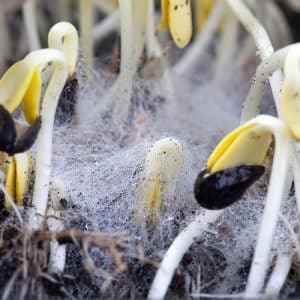
White Mold – Sclerotinia sclerotiorum
Sclerotinia sclerotiorum is a necrotrophic fungal disease that causes what’s known as white mold, it can infect over 400 plant species worldwide. It’s also called cottony soft rot, stem rot, watery soft rot, crown rot, and seedling blight.
S. sclerotiorum key properties are its ability to create sclerotia which are its black resting structures, and mycelium which are the white fuzzy spiderweb-like growths you see on stems and growing medium.
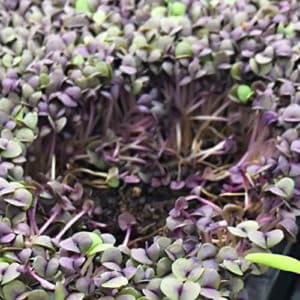
Damping Off
Damping-off is an umbrella term that covers fungi and fungi-like organisms in several genera including Rhizoctonia, Botrytis, Phytophthora, and Fusarium, with the soil fungus Pythium being the often culprit.
Damping-off is a soil-borne fungal disease that affects seeds and seedlings typically by rotting of the stems and roots at and below the soil surface.
When a seed germinates the seedling will emerge fine but within 24 hours to a few days will become mushy and water-soaked, collapse at the base of the stem and die.
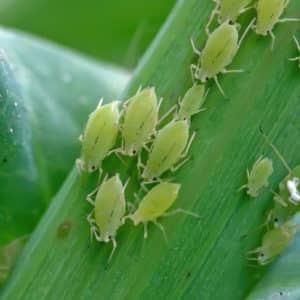
Aphids – Aphidoidea
Aphids suck! Quite literally. They’re soft-bodied insects that use their piercing-sucking mouths to feed on plants and there are over 4,000 aphid species in the world.
Other common names are greenflies, blackflies, and plant lice. They come in varying colors such as light green, black, white, brown, gray, or yellow.
When aphids feed on plants they secrete a sticky fluid which is called honeydew (no, don’t eat it). This goo they leave behind drips onto plants and can attract other pests such as ants. If the honeydew is left on leaves it can promote black sooty mold.
Sunflower Nutrition Facts
Black Oil Sunflower microgreens are a nutritious source of 39 Kcal per serving.
They are similar in nutritional value to mature sunflower seeds, with 6.25g of carbohydrates, 3.12g of protein, and 3.1g of dietary fiber to support digestive health.
They are also rich in essential minerals like iron, magnesium, and potassium, as well as Vitamin B2 and Vitamin K.
Although they lack certain vitamins like Vitamin A and Vitamin E, Black Oil Sunflower microgreens are a healthy addition to salads and dishes.
| Principle | Nutrient Value | Unit | RDA |
| Energy | 39 | Kcal | 2% |
| Carbohydrates | 6.25 | g | 5% |
| Protein | 3.12 | g | 6% |
| Total Fat | 0 | g | 0% |
| Cholesterol | 0 | mg | 0% |
| Dietary Fiber | 3.1 | g | 8% |
| Vitamins | |||
| Choline | 0 | mg | 0% |
| Folate | 94 | µg | 24% |
| Selenium, Se | 27 | µg | 49% |
| Vitamin A | 19 | µg | 25% |
| Vitamin B1 (Thiamin) | 0 | mg | 0% |
| Vitamin B2 (Riboflavin) | 0.266 | mg | 20% |
| Vitamin B3 (Niacin) | 1.875 | mg | 12% |
| Vitamin B-6 (Pyridoxin) | 0.25 | mg | 19% |
| Vitamin C | 14.1 | mg | 16% |
| Vitamin E | 0 | mg | 0% |
| Vitamin K | 62.5 | µg | 52% |
| Electrolytes | |||
| Sodium, Na | 16 | mg | 1.07% |
| Potassium, K | 422 | mg | 8.98% |
| Minerals | |||
| Calcium, Ca | 125 | mg | 12.50% |
| Copper, Cu | 0.625 | mg | 69.44% |
| Iron, Fe | 22.5 | mg | 281.25% |
| Magnesium, Mg | 94 | mg | 22.93% |
| Manganese, Mn | 0 | mg | 0.00% |
| Phosphorus, P | 125 | mg | 17.86% |
| Zinc, Zn | 0.94 | mg | 8.55% |
| Phytonutrients | |||
| β-Carotene, beta | 0 | µg | 0.00% |
| α-Carotene, alpha | 0 | µg | 0.00% |
| Lutein + zeaxanthin | 0 | µg | 0.00% |
Recommended Products
Explore my top curated picks for products needed to grow microgreens. Rest assured that all the featured items and products have been meticulously put to the test by me or have received glowing recommendations from my esteemed readers.
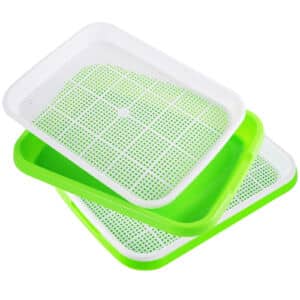
Microgreen Grow Trays
For my personal home use, these microgreen trays are my go to. Measuring around 12.2 x 9.06 x 1.77 inches (31 x 23 x 4.5 cm), these trays are perfectly suited for cultivating microgreens in a home microgreen grow room. What’s more, they’re durable, and cleaning them is a walk in the park, making them an all-around convenient choice.
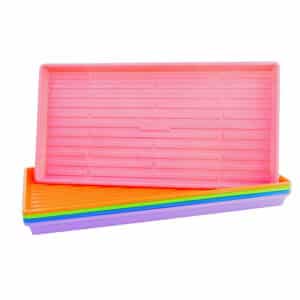
1020 Microgreen Trays – Shallow Extra Strength Colors
Industry leading BootStrap Farmers 1020 microgreen trays! Designed with long lasting durability in mind, these colorful trays are built to withstand years of use and abuse. With a height of 1¼ inches (3.2 cm), these shallow trays make harvests easy, saving you time and increasing your yield. The trays come equipped with 36 drainage holes that effectively remove excess water, promoting a healthy growing environment and preventing mold growth. If you’re serious about growing microgreens and want the best trays available on the market, these trays are it!
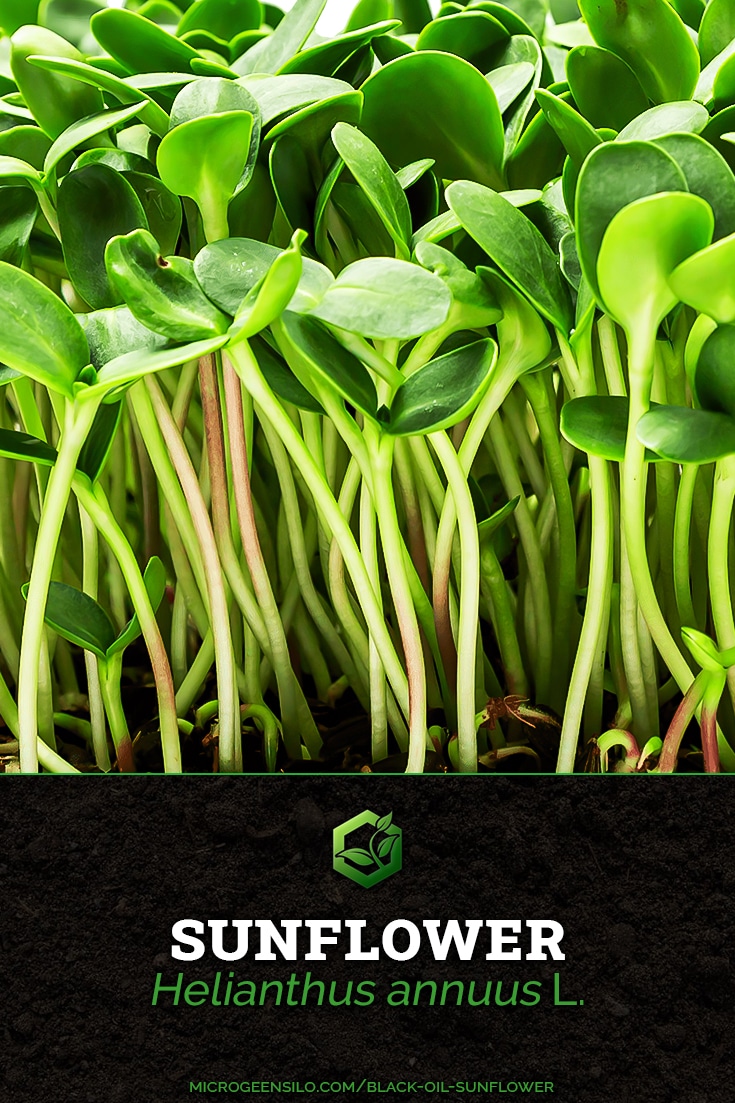
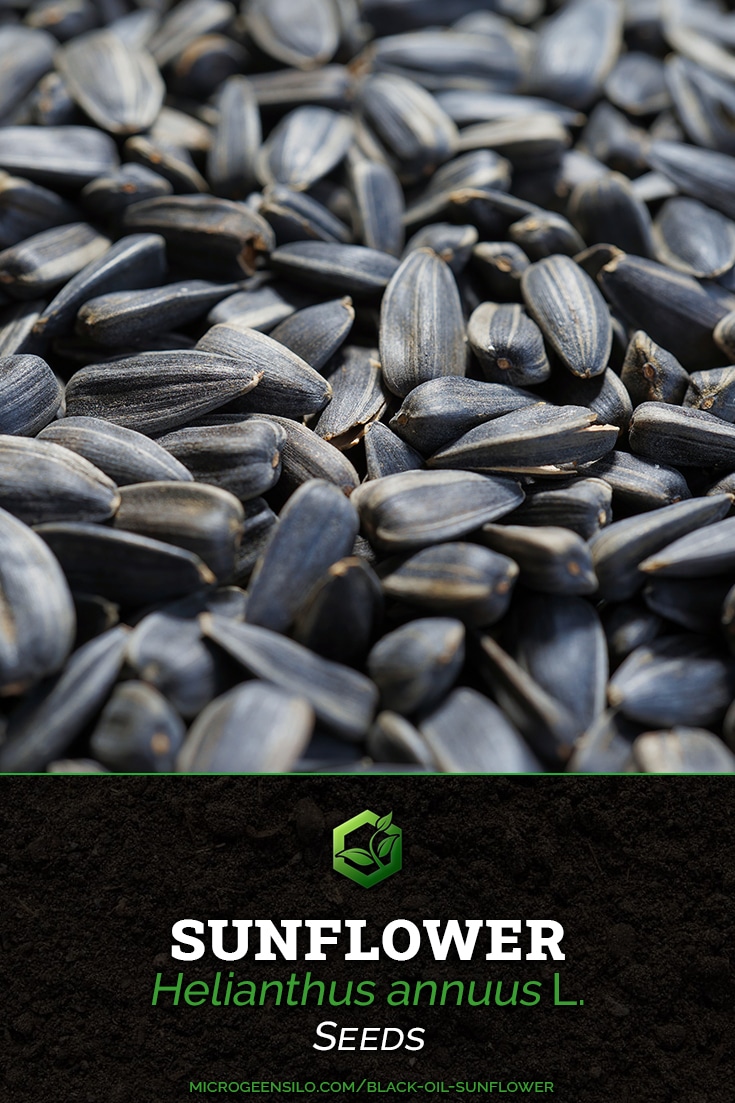


Comments (2)
Hi Milos, You always provide clear explanations and definitions.
I really appreciate your kind words and the recognition! It’s great to know that my explanations and definitions have been clear and helpful to you. At Microgreensilo.com, my main objective is to make information about microgreens and related topics accessible and easy to understand for everyone.
I always strive to maintain a high standard of clarity in the content I create, ensuring that both beginners and enthusiasts can benefit from the knowledge I share. Your feedback motivates me to keep refining my content and providing valuable insights for our readers.
If there are any specific topics or questions you’d like me to address in the future, please don’t hesitate to let me know. I value input from users like yourself and I’m always eager to meet your needs and expectations.
Once again, thank you for your support and kind words. I’m excited about continuing to be your trusted source for everything related to microgreens.
Warm regards,
Milos Vukcevic